暫與留:人與自然的停駐點
Pause and Stay: A Resting Place for Humans and Nature
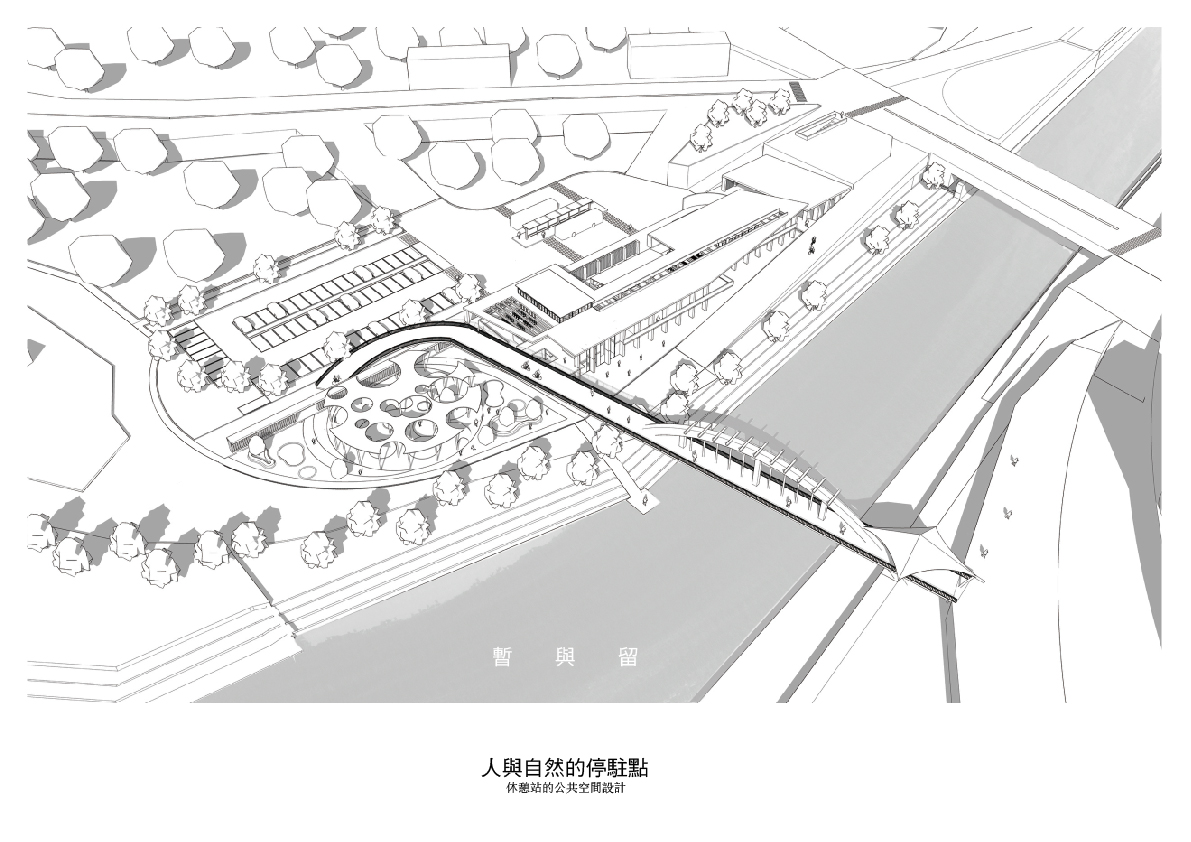
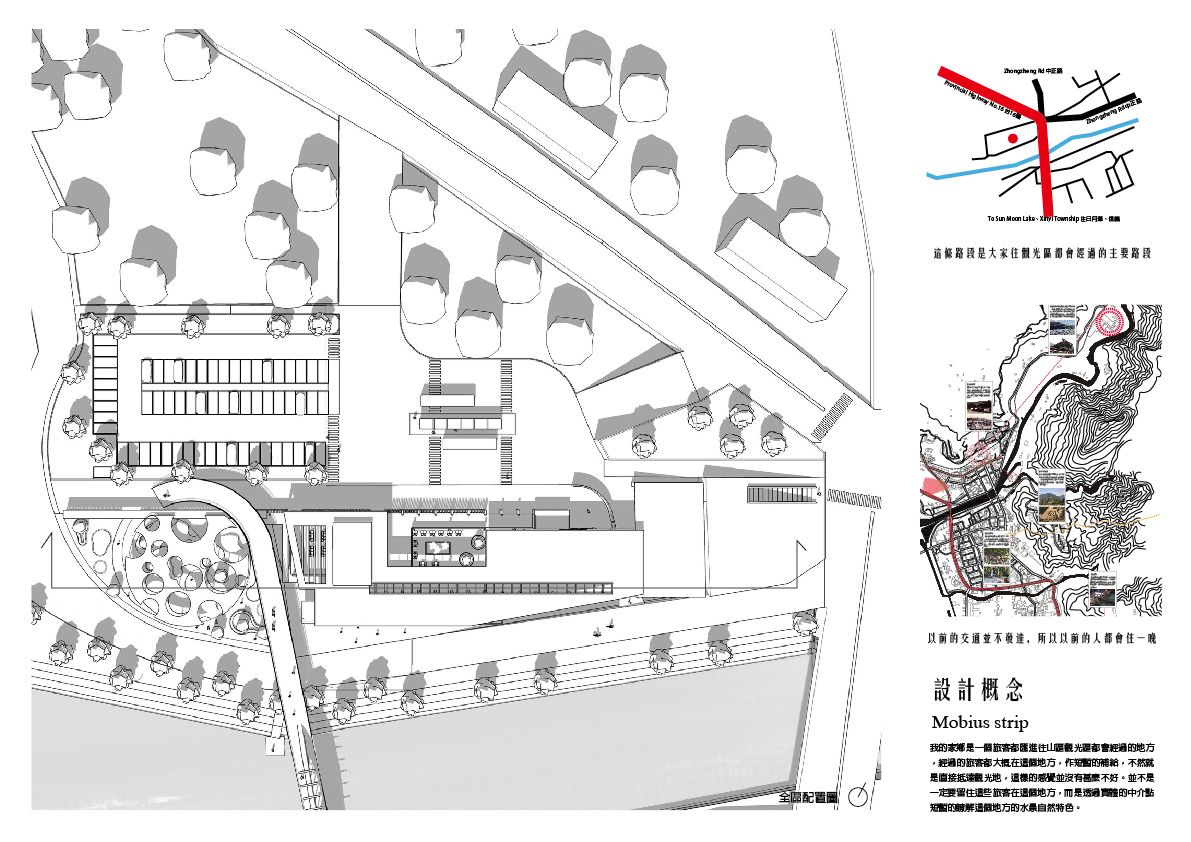
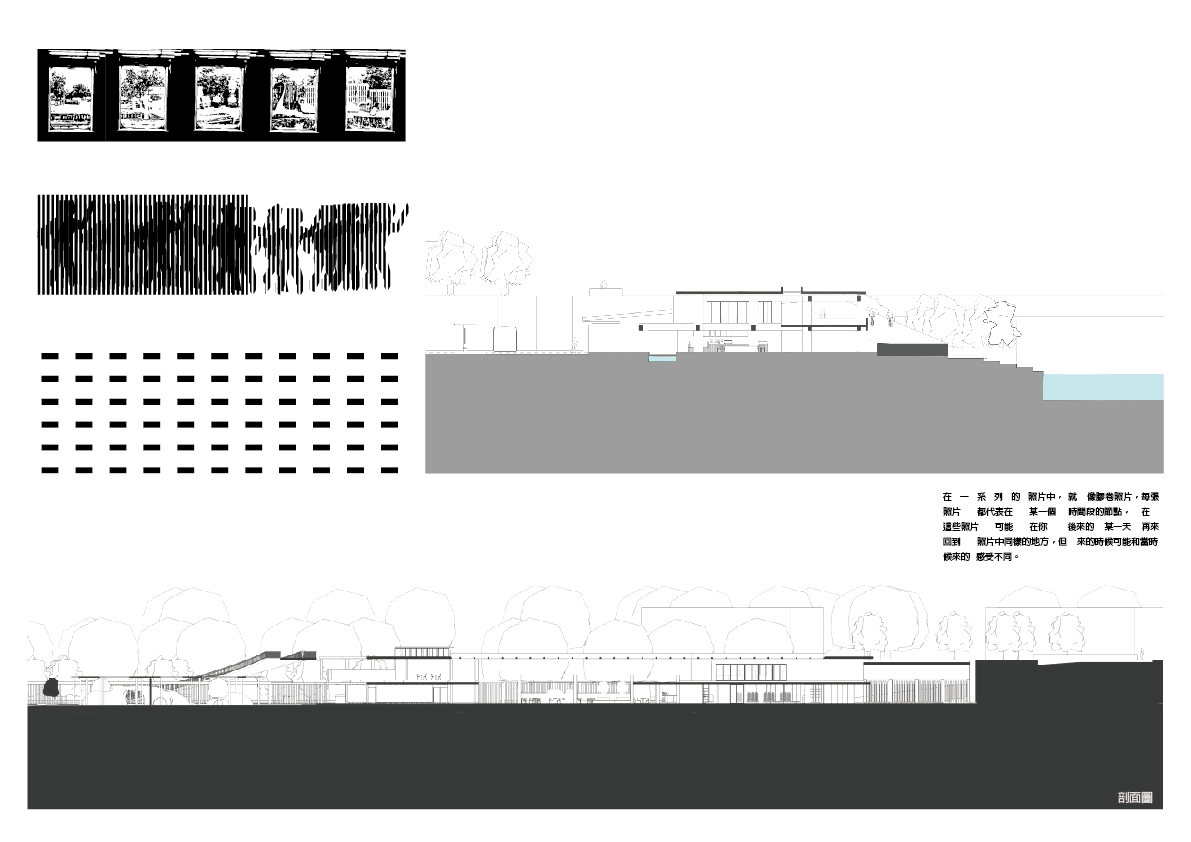
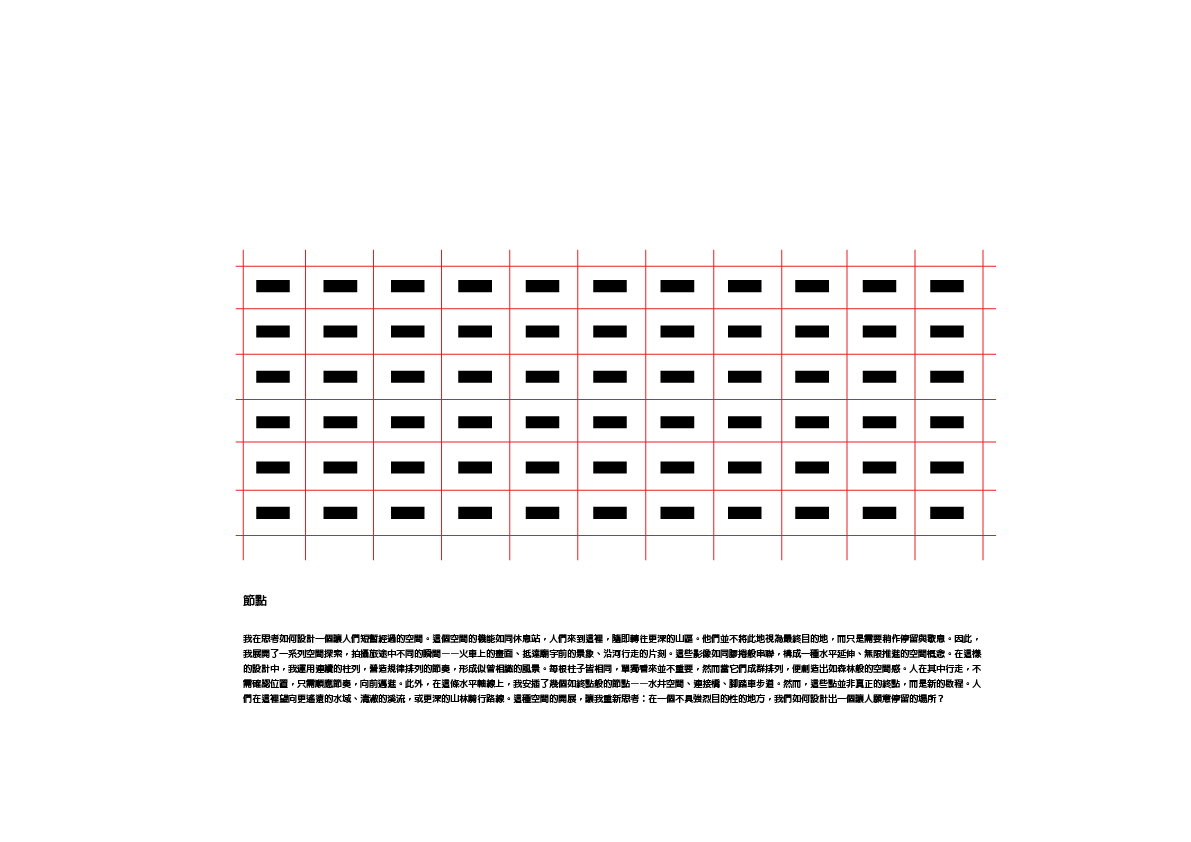
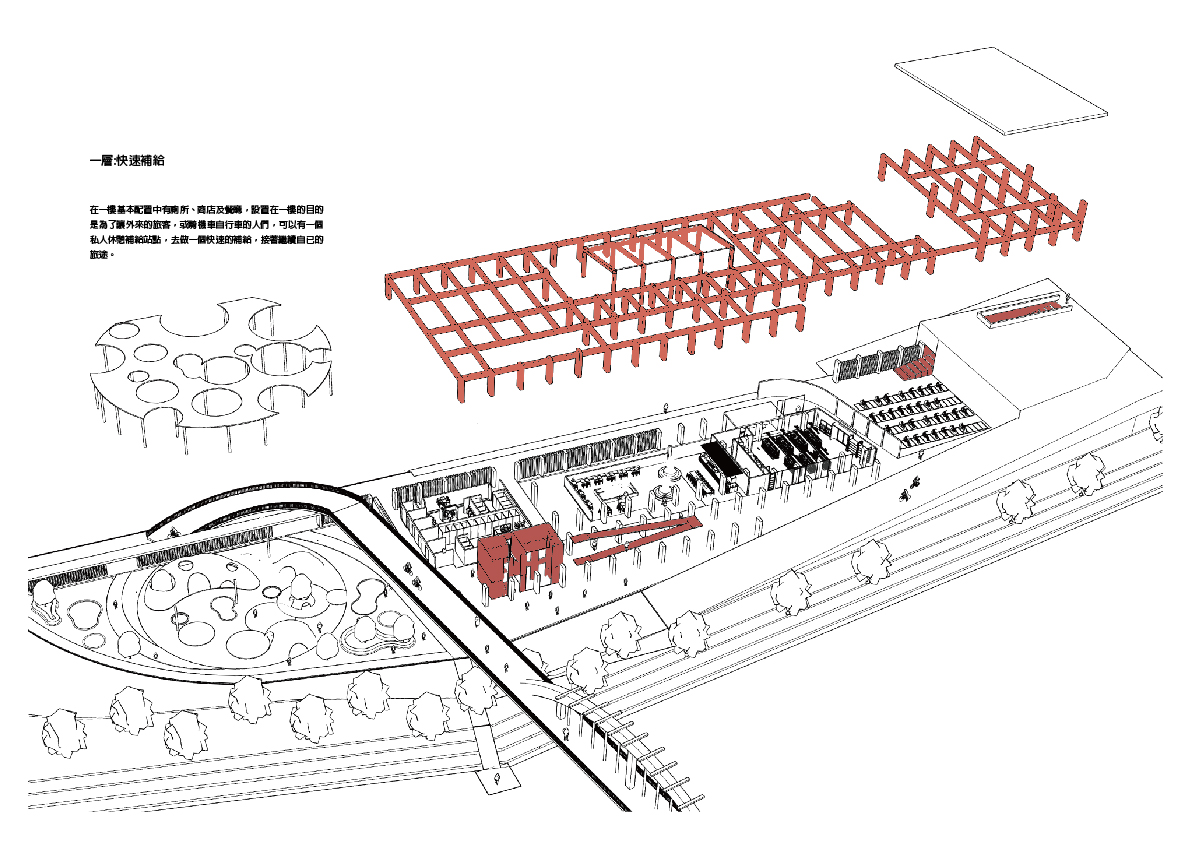

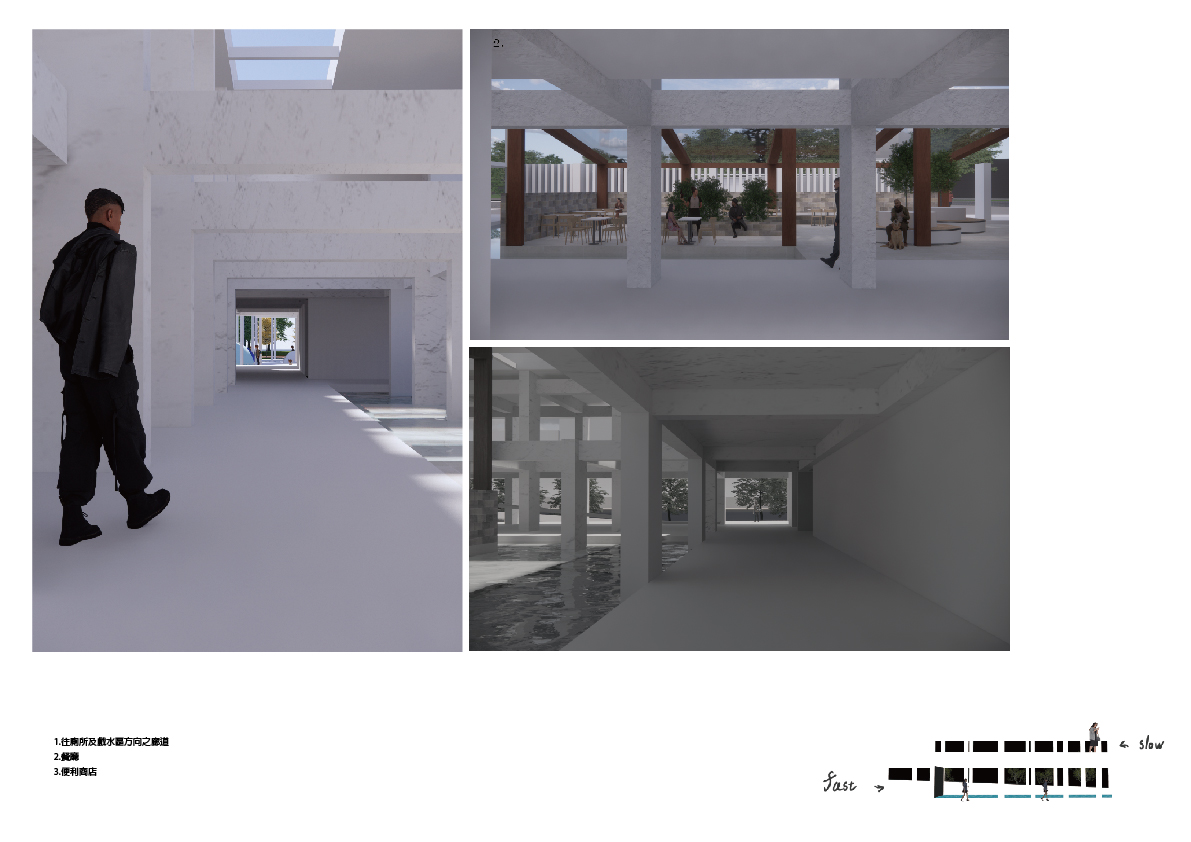
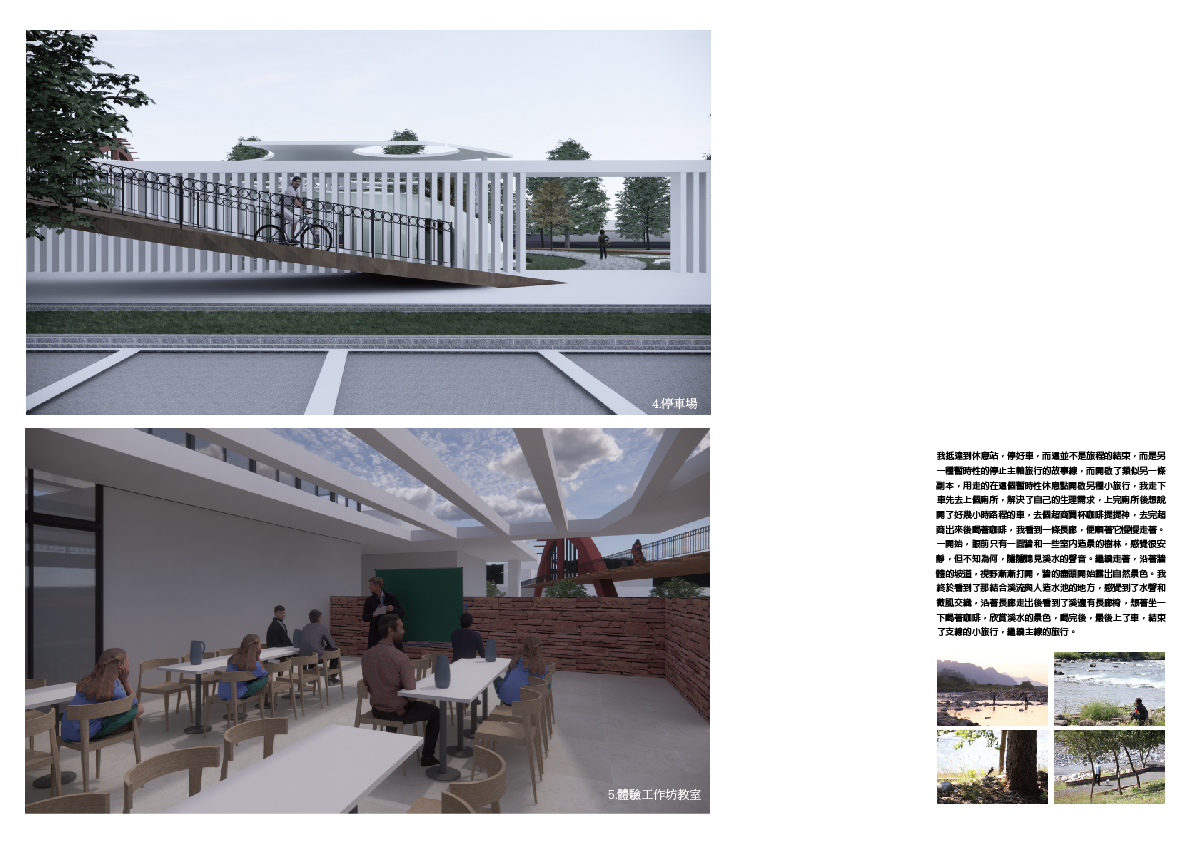
我的家鄉位於台 16 線上,通往日月潭與信義鄉山區的必經之地。無論是自駕、搭乘大眾運輸、旅行團,或騎機車與自行車,旅客幾乎都會經過這裡。然而,大多數人只是短暫停留,補給食物、加油或稍作休息,便匆匆離去,繼續前往目的地。這種停留模式並沒有什麼不好,畢竟他們的目標是山區風景,未必會特別關注沿途的城鎮與聚落。
這裡就像觀光動線上的一個臨時停靠點,人們經過、停留、離開。這樣的短暫性看似無關緊要,但對我而言,它反而構成了一種習以為常的日常風景。這讓我聯想到高速公路上的休息站——人們匆忙來去,或許為了生理需求,或許只是短暫喘息。那麼,如果這裡也是一座「休息站」,它應該承載什麼樣的功能?
為了探索這個問題,我開始記錄旅途中那些轉瞬即逝的片刻——火車上的風景、抵達廟宇前的景象、沿著河川行走的瞬間。這些影像像膠卷般串聯,形成一種水平延伸、無限推進的空間概念。我在設計中運用連續的柱列,以規律的排列營造出似曾相識的風景。每根柱子都與相鄰的柱子相同,單獨看來或許微不足道,但當它們連結在一起,便創造出如森林般的空間感。人在其中行走,不需確認位置,只需順應節奏向前邁進。
同時,我在這條無限延展的水平軸線上,安插了一些看似終點的節點——水井空間、連接橋、腳踏車步道。然而,這些點並非真正的終點,而是新的啟程。人們在這裡望向更遠的水域,探索溪流,或沿著自行車道騎往更深的山林。這樣的空間體驗讓我開始思考:在一個不具強烈目的性的場所,我們如何設計出讓人願意停留的場域?
Pause and Stay: A Resting Place for Humans and Nature
My hometown is located along Provincial Highway 16, a necessary passage for those traveling to Sun Moon Lake and the mountain areas of Xinyi Township. Whether by car, public transportation, tour groups, motorcycles, or bicycles, nearly all travelers pass through here. However, most only make brief stops—to refuel, grab food, or take a short break—before quickly continuing toward their destination. This pattern of short stays isn’t necessarily a bad thing; after all, their main goal is the mountain scenery, and they may not pay much attention to the towns and settlements along the way.
This place functions as a temporary stop along the tourist route, where people pass by, pause, and then leave. While this transience might seem insignificant, to me, it has become an ordinary yet intriguing part of daily life. It reminds me of highway rest areas—places where people come and go in haste, whether to fulfill physical needs or simply to catch their breath. If this place were also a "rest stop," what kind of functions should it provide?
To explore this question, I began documenting fleeting moments of travel—the passing scenery from a train, the view before arriving at a temple, the experience of walking along a riverbank. These images, like frames of film, connect in a continuous sequence, forming a spatial concept of horizontal extension and infinite progression. In my design, I use a series of evenly spaced columns to create a familiar yet indistinct landscape. Each column is identical to the next; no single one is particularly significant, but together, they shape an experience akin to walking through a forest. Here, people move forward without needing to know their precise location—they simply follow the rhythm of the space.
At the same time, I have subtly inserted perceived "endpoints" along this endless horizontal axis—water courtyards, connecting bridges, and cycling paths. Yet, these points are not true endings but rather new departures. From these spots, visitors can look out toward distant water landscapes, explore clear streams, or cycle deeper into the mountains. This exploration of space has led me to a critical question: in a place without a strong sense of purpose, how can we design a space that encourages people to linger?